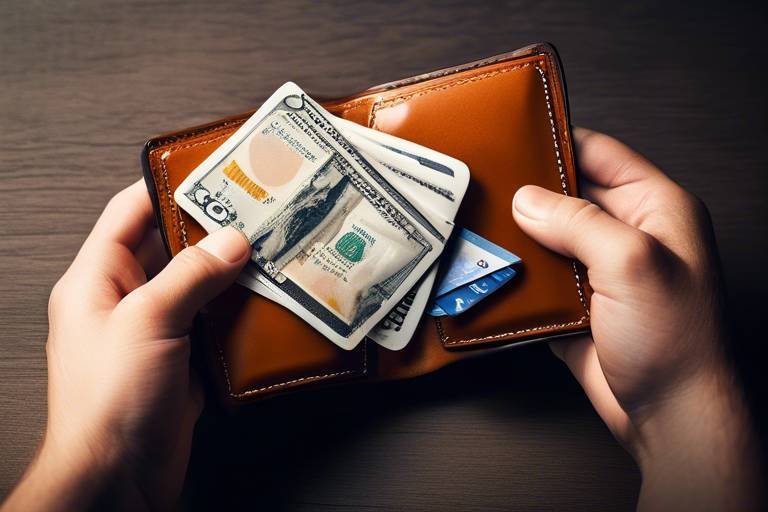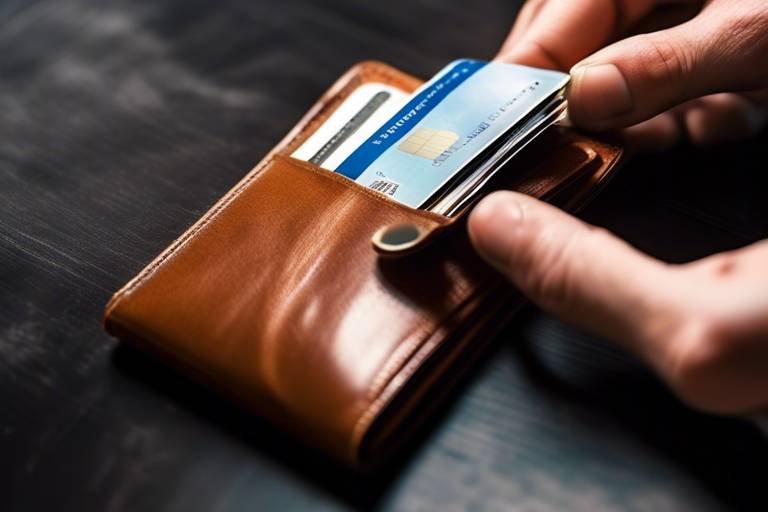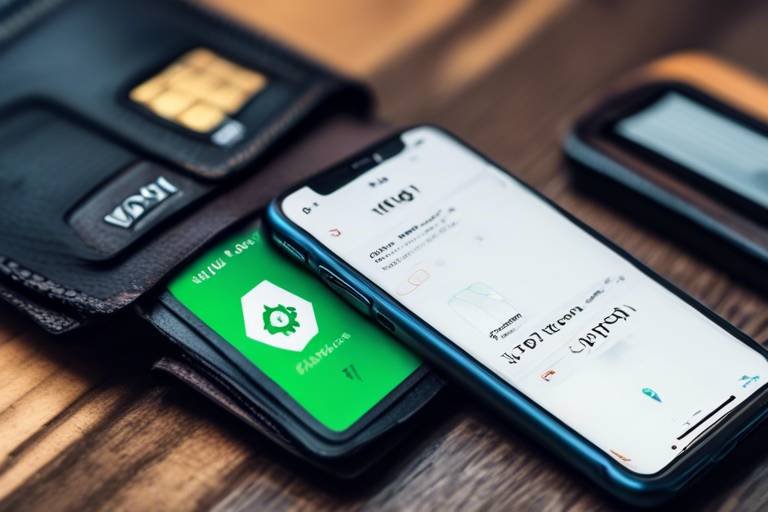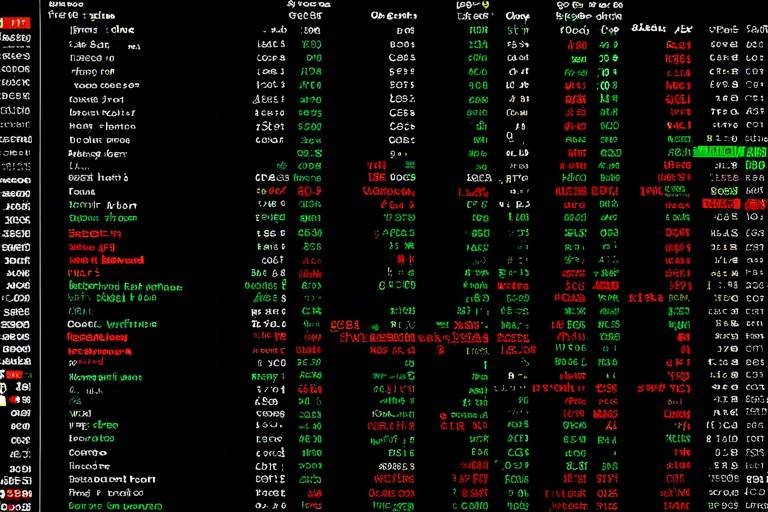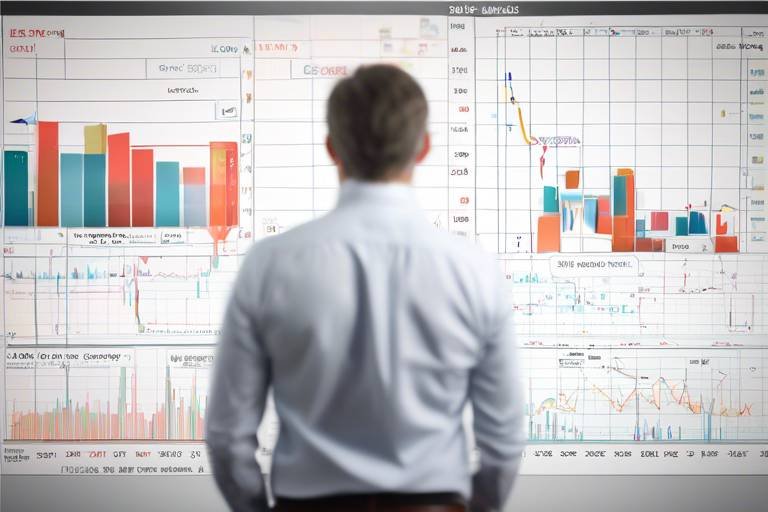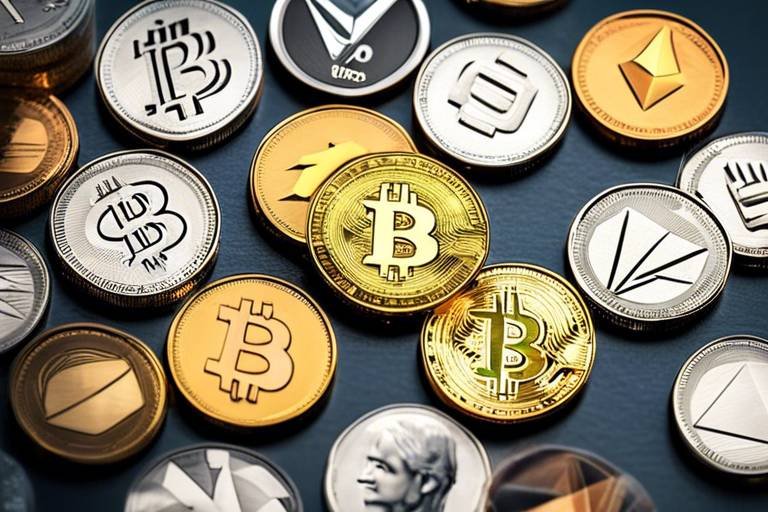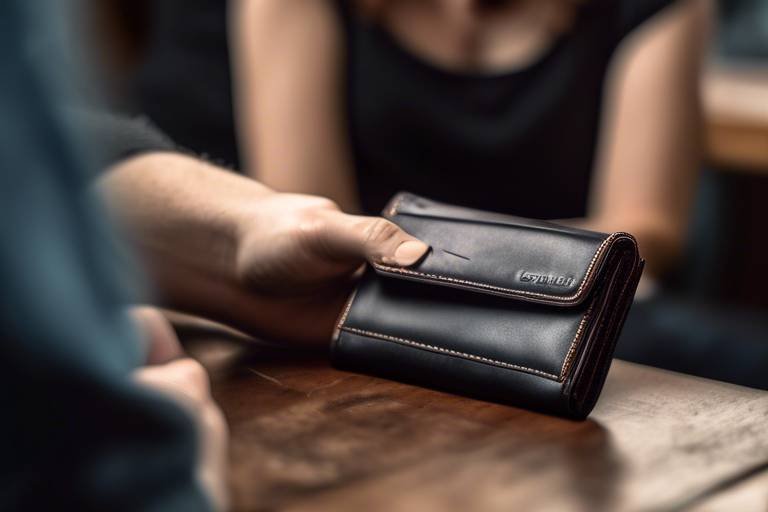How to Stay Updated on Wallet Security Best Practices
In an age where our financial transactions are increasingly conducted online, ensuring the security of our digital wallets has never been more crucial. With the rise of digital currencies and online banking, the potential for fraud and theft has also surged. So, how do we keep our digital assets safe? This article explores essential strategies for keeping your digital wallet secure, including the latest trends, tools, and tips for maintaining your financial safety in an increasingly digital world. By understanding wallet security and implementing best practices, you can protect yourself from potential threats and enjoy peace of mind.
To effectively safeguard your digital assets, it's important to grasp the fundamental principles of wallet security. This involves a combination of encryption, two-factor authentication, and the importance of secure storage. Encryption serves as a protective barrier that encodes your sensitive information, making it unreadable to unauthorized users. Two-factor authentication adds an extra layer of security by requiring not just a password but also a secondary verification method, such as a code sent to your mobile device. Secure storage, whether through hardware wallets or trusted software solutions, ensures that your assets remain out of reach from potential hackers.
As we navigate the digital landscape, it's vital to be aware of the various threats that can compromise wallet security. Common threats include phishing attacks, malware, and social engineering tactics. Each of these risks has its unique characteristics, but they all share a common goal: to gain unauthorized access to your sensitive information. By understanding these threats, you can better recognize and mitigate the risks effectively.
Phishing attacks are a prevalent threat where attackers impersonate legitimate entities to steal sensitive information. These attacks often come in the form of deceptive emails or messages that prompt users to enter their credentials on a fraudulent website. Recognizing the signs of phishing can help users safeguard their wallets. For instance, if you receive an email that seems urgent and asks for personal information, it's a red flag. Always verify the sender's email address and avoid clicking on suspicious links.
To spot common indicators of phishing emails, look for:
- Unusual sender addresses: Check for slight variations in the email address that may appear legitimate at first glance.
- Urgent requests: Be wary of emails that create a sense of urgency, pressuring you to act quickly.
- Generic greetings: Legitimate companies will often use your name, while phishing emails may use generic terms like "Dear Customer."
Implementing safe browsing practices can significantly reduce the risk of phishing attacks on your wallet. Always ensure that you are using secure connections (look for HTTPS in the URL), avoid clicking on unfamiliar links, and consider using a reputable browser with built-in security features. These small steps can go a long way in protecting your digital assets.
Malware and ransomware can compromise wallet security by infiltrating devices and encrypting sensitive data. These malicious programs can be delivered through infected downloads, email attachments, or compromised websites. Understanding how to protect against these threats is crucial for wallet users. Always keep your antivirus software updated and be cautious about the sites you visit and the files you download.
Now that we understand the threats, let's dive into some effective best practices for enhancing wallet security. Regular updates, strong password management, and secure backup strategies are essential components of a robust security framework. Keeping your wallet software and devices updated is essential for protecting against vulnerabilities. Regular updates ensure that security patches are applied promptly to defend against emerging threats.
Keeping your wallet software and devices updated is essential for protecting against vulnerabilities. Regular updates ensure that security patches are applied promptly to defend against emerging threats. Make it a habit to check for updates frequently, as developers often release updates to address newly discovered security issues.
Utilizing strong, unique passwords for your wallet and employing password managers can help prevent unauthorized access and improve overall wallet security. A strong password should be at least 12 characters long and include a mix of letters, numbers, and symbols. Password managers can help you generate and store complex passwords securely.
Staying updated with the latest security trends and news is vital for wallet users. Follow reputable sources and engage with communities to remain vigilant against evolving threats. Engaging with security-focused blogs can provide valuable insights into emerging threats and best practices for wallet security, helping users make informed decisions.
By subscribing to security blogs, you can receive timely updates on the latest threats and preventative measures. These blogs often share expert opinions and actionable tips, making them a valuable resource for any wallet user.
Joining online forums and communities can facilitate discussions on wallet security, allowing users to share experiences and learn from each other’s strategies for protecting their assets. These interactions can provide real-world insights that enhance your understanding of wallet security.
Explore various security tools available for enhancing wallet protection, from antivirus software to hardware wallets. Investing in reliable antivirus and anti-malware software can help detect and eliminate threats before they compromise your wallet, providing an additional layer of security. Hardware wallets offer a secure way to store digital assets offline, reducing the risk of online threats. Understanding their benefits can help users make informed choices about wallet security.
Using reputable antivirus and anti-malware software is crucial for maintaining wallet security. These tools can help identify and neutralize threats before they cause harm. Regularly scanning your devices can ensure that you remain protected against the latest malware.
Hardware wallets provide a secure way to store your digital assets offline, significantly reducing the risk of online threats. They are designed to keep your private keys safe, allowing you to manage your assets without exposing them to the internet. Understanding how to use a hardware wallet can be a game-changer for your wallet security.
In conclusion, staying updated on wallet security best practices is essential for protecting your digital assets. By understanding threats and implementing effective strategies, you can enhance your financial safety in the digital landscape. Remember, security is an ongoing process, and staying informed is your best defense against potential risks.
1. What is a digital wallet?
A digital wallet is an electronic device or online service that allows individuals to store, send, and receive digital currency securely.
2. How can I improve my wallet security?
Improve your wallet security by using strong passwords, enabling two-factor authentication, and keeping your software updated.
3. What are the risks associated with digital wallets?
The risks include phishing attacks, malware, and unauthorized access, which can lead to the loss of your digital assets.
4. Are hardware wallets safe?
Yes, hardware wallets are considered one of the safest ways to store digital assets as they keep your private keys offline.

Understanding Wallet Security
In today's digital age, understanding wallet security is not just a good idea—it's a necessity. With the rise of cryptocurrencies and digital transactions, our financial assets are increasingly stored in online wallets, making them prime targets for cybercriminals. So, what does it really mean to secure your digital wallet? At its core, wallet security revolves around a few fundamental principles that every user should be aware of. These include encryption, two-factor authentication, and the importance of secure storage.
Encryption is a technique that transforms your sensitive information into a code, making it unreadable to anyone who doesn’t have the decryption key. Think of it as a secret language that only you and your wallet can understand. This means that even if a hacker manages to access your wallet, they would only see a jumble of letters and numbers instead of your actual assets. It's like having a high-tech vault that only you can unlock!
Next up is two-factor authentication (2FA). This is like having a double lock on your front door. Even if someone has your password, they won't be able to access your wallet without that second piece of information, usually sent to your phone or email. It adds an important layer of protection that can deter even the most determined attackers.
But it doesn't stop there. The importance of secure storage cannot be overstated. Whether you’re using a software wallet, a hardware wallet, or even a paper wallet, you need to ensure that your private keys—the keys that unlock your wallet—are stored safely. It's akin to keeping your house keys in a secure place rather than just lying around where anyone can grab them. Here’s a quick breakdown of the different types of wallets:
| Type of Wallet | Description | Security Level |
|---|---|---|
| Software Wallet | Online wallets accessible via apps or websites. | Medium |
| Hardware Wallet | Physical devices that store your keys offline. | High |
| Paper Wallet | Physical printouts of your keys. | Medium to High |
In summary, understanding wallet security isn't just about knowing the technical jargon; it's about taking actionable steps to protect your financial assets. By leveraging encryption, implementing two-factor authentication, and ensuring secure storage, you can significantly reduce the risk of falling victim to cyber threats. Remember, in the world of digital finance, an ounce of prevention is worth a pound of cure!
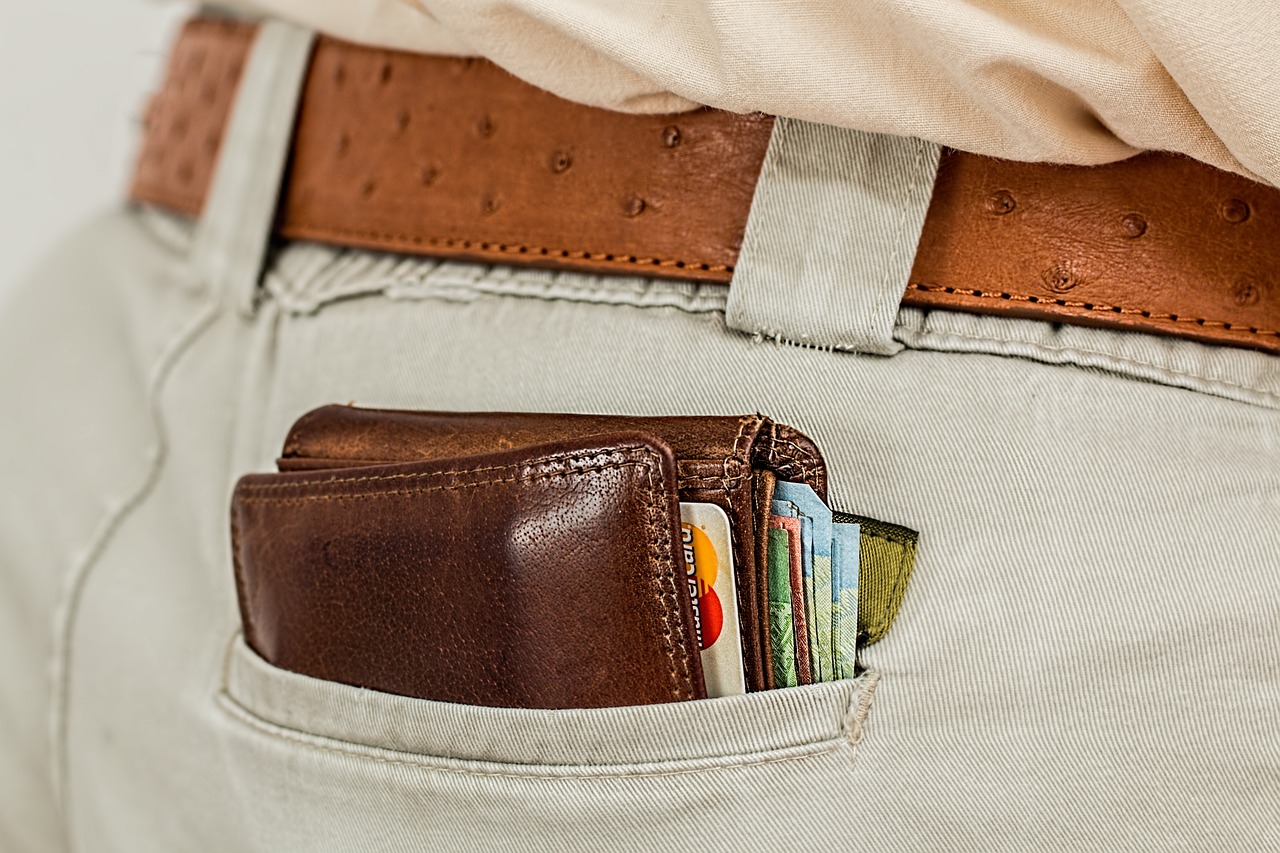
Common Threats to Wallet Security
In our increasingly digital world, wallet security has become a hot topic of discussion. With the rise of digital wallets, the potential for threats has also escalated. Understanding the common threats to wallet security is crucial for anyone looking to protect their financial assets. These threats can come in various forms, each with unique tactics and implications. From phishing attacks to malware, each threat poses a distinct risk that can lead to devastating consequences if not addressed.
One of the most prevalent threats is phishing attacks. These deceptive tactics involve attackers impersonating legitimate entities, such as banks or digital wallet providers, to trick users into revealing sensitive information. Phishing can occur through emails, messages, or even fake websites designed to look like the real deal. To effectively combat phishing, users must be vigilant and learn to recognize the signs, which can include:
- Unusual sender addresses that don’t match official domains
- Urgent requests for personal information
- Generic greetings instead of personalized messages
Another significant threat comes from malware and ransomware. These malicious software types infiltrate devices, often without the user's knowledge, and can encrypt or steal sensitive data. Ransomware, in particular, can lock users out of their wallets until a ransom is paid, leaving them vulnerable and desperate. To protect against these threats, users must maintain updated antivirus software and practice safe browsing habits.
But the threats don’t stop there. Social engineering tactics also play a significant role in wallet security breaches. Attackers may manipulate individuals into divulging confidential information through various psychological tactics. This can include impersonating a trusted friend or authority figure to gain access to sensitive data. Understanding how these tactics work can empower users to stay one step ahead of potential threats.
To summarize, the landscape of wallet security is fraught with risks that can jeopardize your financial safety. By recognizing these common threats, including phishing, malware, and social engineering, users can take proactive measures to safeguard their digital wallets. But knowledge alone isn’t enough; it must be paired with action. Implementing robust security practices and remaining vigilant against emerging threats is essential for maintaining wallet security in today’s digital age.
- What is a phishing attack? A phishing attack is a fraudulent attempt to obtain sensitive information by disguising as a trustworthy entity in electronic communications.
- How can I protect my wallet from malware? Regularly updating your antivirus software, avoiding suspicious downloads, and staying aware of phishing attempts can help protect against malware.
- What are social engineering tactics? Social engineering tactics involve manipulating individuals into divulging confidential information by exploiting psychological triggers.
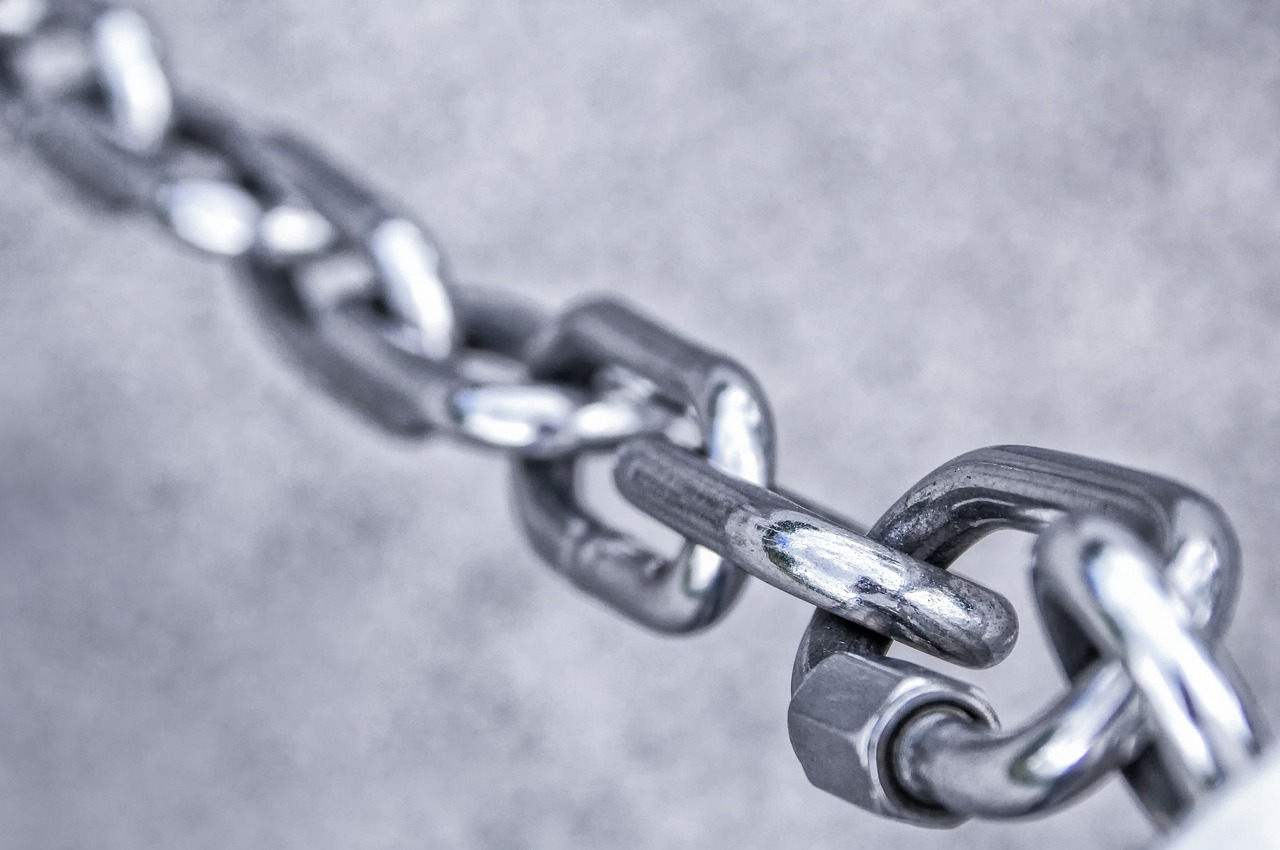
Phishing Attacks
Phishing attacks have become one of the most common and deceptive threats in the digital landscape. These attacks often masquerade as legitimate communications from trusted entities, luring unsuspecting users into providing sensitive information such as passwords, credit card numbers, and other personal data. It's like a wolf in sheep's clothing, where the attacker crafts emails or messages that appear genuine, creating a false sense of security. But just how can you protect yourself from falling into this trap?
Recognizing the signs of phishing is crucial. Attackers often use various tactics to make their emails or messages look credible. Here are some key indicators to watch out for:
- Unusual Sender Addresses: Check the sender's email address closely. Phishers often use addresses that closely resemble legitimate ones but may have slight variations.
- Urgent Requests: Be wary of messages that create a sense of urgency, urging you to act quickly. Legitimate companies rarely pressure you to provide personal information immediately.
- Generic Greetings: Phishing emails often use generic salutations like "Dear Customer" instead of addressing you by name.
- Suspicious Links: Hover over any links before clicking to see where they lead. If the URL looks suspicious or doesn't match the supposed sender's website, it's best to avoid it.
Implementing safe browsing practices is another effective way to mitigate the risks associated with phishing attacks. Here are a few strategies you can adopt:
- Avoid Suspicious Links: If you receive an email from an unknown source, don’t click on any links or download attachments unless you are sure of their legitimacy.
- Use Secure Connections: Always ensure that the website you are visiting uses HTTPS, especially when entering sensitive information. A secure connection helps protect your data from being intercepted.
- Enable Two-Factor Authentication: Whenever possible, enable two-factor authentication on your accounts. This adds an extra layer of security, making it more challenging for attackers to gain access.
In conclusion, phishing attacks are a significant threat to wallet security, but by staying informed and vigilant, you can protect yourself and your digital assets. Always remember that if something feels off, it probably is. Trust your instincts and take the necessary precautions to safeguard your information.
Q: What should I do if I suspect I've fallen for a phishing attack?
A: Immediately change your passwords for any accounts that may have been compromised and enable two-factor authentication. Additionally, report the phishing attempt to your email provider and relevant authorities.
Q: How can I verify if an email is legitimate?
A: Check the sender's email address, look for grammatical errors, and verify any links by hovering over them before clicking. If in doubt, contact the company directly using a known phone number or their official website.
Q: Are there tools to help identify phishing emails?
A: Yes, there are several browser extensions and email filters designed to detect phishing attempts. Utilizing these tools can add an additional layer of protection.
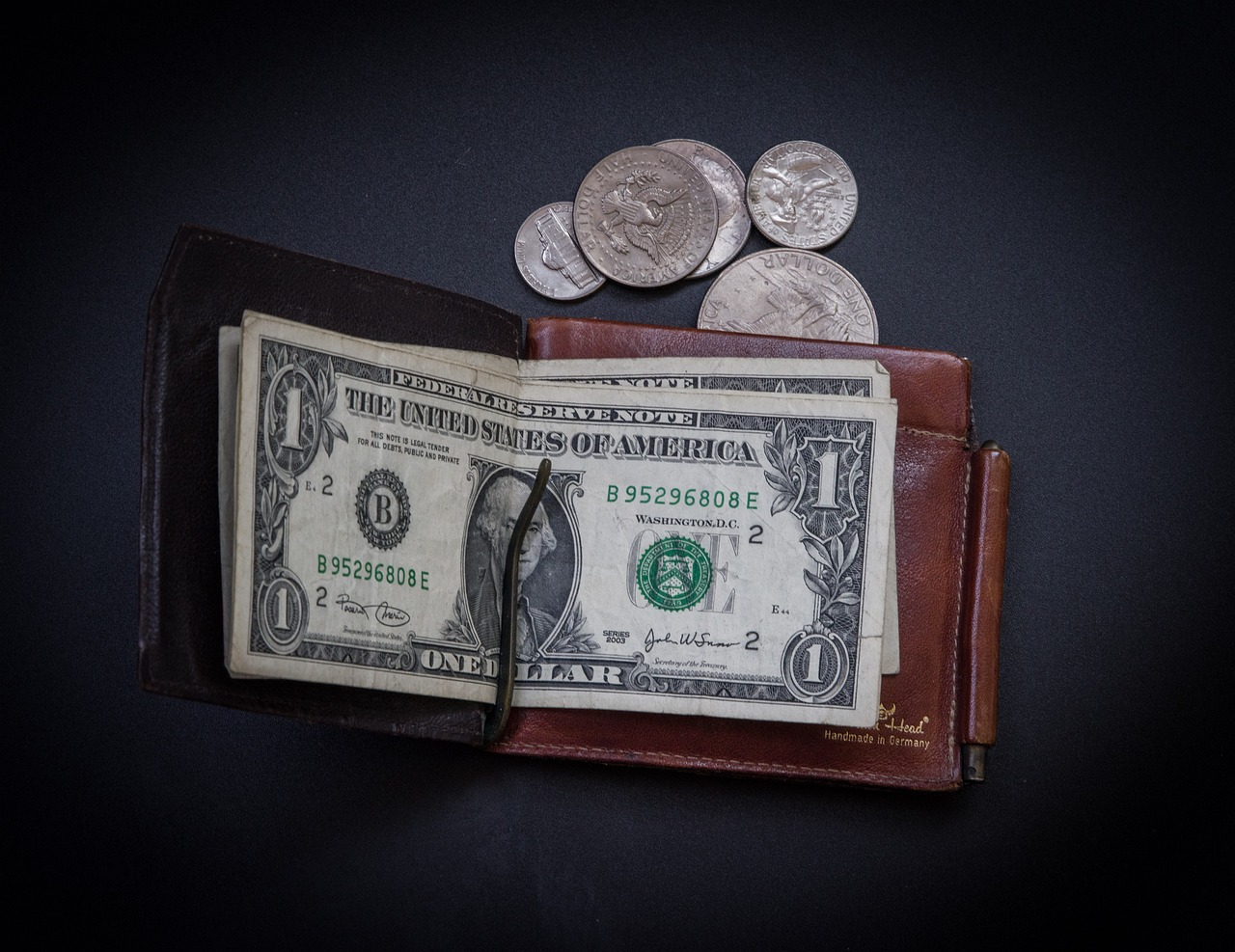
Identifying Phishing Emails
When it comes to securing your digital wallet, one of the most crucial skills you can develop is the ability to identify phishing emails. These deceptive messages often masquerade as legitimate communications from trusted sources, and they aim to trick you into divulging sensitive information. But fear not! By learning to recognize the telltale signs of phishing attempts, you can protect yourself and your assets.
First and foremost, always be cautious of unusual sender addresses. Phishing emails often come from addresses that mimic legitimate companies but contain slight variations. For example, an email that appears to be from your bank might come from yourbank123@gmail.com instead of support@yourbank.com. Always double-check the sender's email address before taking any action.
Another red flag to watch out for is urgent requests for personal information. Phishing emails often create a sense of panic or urgency, prompting you to act quickly without thinking. Phrases like "Your account will be suspended unless you verify your information immediately!" should raise alarms. Legitimate companies typically do not ask for sensitive information through email.
Additionally, look for poor grammar and spelling mistakes. Many phishing emails are poorly written, filled with awkward phrasing and typos. If an email from your bank seems unprofessional, it's a good indicator that it might not be genuine. Trust your instincts—if something feels off, it probably is.
To help you stay vigilant, here’s a quick checklist of common indicators of phishing emails:
- Unusual sender addresses
- Urgent requests for personal information
- Poor grammar and spelling errors
- Generic greetings instead of personalized ones
- Suspicious links or attachments
Lastly, always hover over links before clicking on them. This simple action can reveal the true URL, helping you determine whether it leads to a legitimate site or a malicious one. If you find a link that looks suspicious, do not click on it. Instead, visit the official website directly by typing the URL into your browser.
By keeping these tips in mind, you can significantly reduce your chances of falling victim to phishing attacks. Remember, the key to safeguarding your digital wallet lies in your ability to stay informed and vigilant. If you ever feel uncertain about an email, it’s always best to reach out directly to the company through official channels rather than responding to the email itself.
Q1: What should I do if I receive a suspicious email?
A1: If you receive an email that seems suspicious, do not click on any links or download attachments. Instead, verify the sender's identity by contacting the company directly through their official website or customer service number.
Q2: Can phishing emails come from legitimate-looking addresses?
A2: Yes, phishing emails can appear to come from legitimate addresses. Attackers often use techniques to spoof email addresses, making them look real. Always check for discrepancies in the sender's address.
Q3: How can I report phishing emails?
A3: You can report phishing emails to your email provider, and many companies have dedicated phishing report pages. Additionally, you can forward the email to the Federal Trade Commission (FTC) at spam@uce.gov.
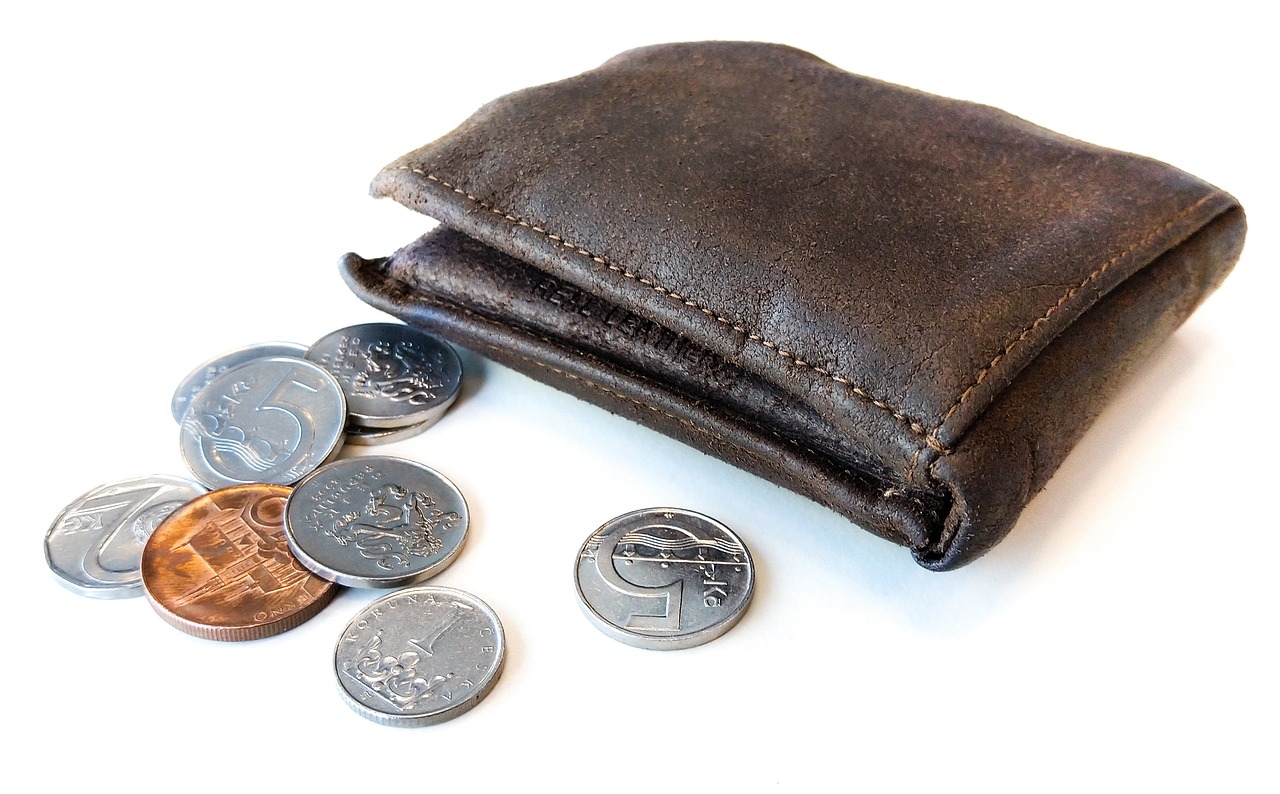
Safe Browsing Practices
When it comes to securing your digital wallet, practicing safe browsing habits is **absolutely crucial**. You might wonder, "What does safe browsing even mean?" Well, think of it as the digital equivalent of locking your front door when you leave the house. Just as you wouldn’t want to leave your valuables exposed to potential thieves, the same principle applies online. Here are some essential guidelines to keep in mind:
First and foremost, always use secure connections. Look for URLs that begin with https:// rather than just http://. The "s" stands for secure, and it indicates that the website is using encryption to protect your data. It's like having a security guard at the entrance of a club. If a site doesn’t have that little “s,” it’s best to steer clear.
Moreover, be cautious about clicking on links, especially those in unsolicited emails or messages. Phishing attempts often disguise themselves as legitimate communications, tricking you into revealing sensitive information. If you receive an email that seems a bit off, it’s wise to double-check the sender's address and look for any red flags. For instance, does the email contain spelling errors or unusual phrasing? If so, it’s likely a scam.
Additionally, consider using a Virtual Private Network (VPN) when accessing your wallet or conducting any financial transactions. A VPN encrypts your internet connection, making it much harder for potential hackers to intercept your data. Think of it as a secret tunnel that keeps your information hidden from prying eyes.
Another tip is to avoid using public Wi-Fi for any financial transactions. Public networks are often unsecured, making them a prime target for cybercriminals. If you absolutely must use public Wi-Fi, ensure you have a VPN enabled to add an extra layer of protection. Just like you wouldn’t shout your bank details in a crowded café, you shouldn’t risk your security on an open network.
Lastly, regularly clear your browser history and cache. This not only helps improve your browsing speed but also removes any saved passwords or sensitive data that could be accessed by someone else using your device. It’s like cleaning out your closet; you don’t want old, unnecessary items piling up, potentially causing a security risk.
In summary, safe browsing practices are your first line of defense against threats to your digital wallet. By being vigilant and adopting these habits, you can significantly reduce the risk of falling victim to cyberattacks. Remember, in the digital world, a little caution goes a long way!
- What is the importance of secure connections?
Secure connections protect your data from being intercepted by encrypting the information exchanged between your browser and the website. - How can I identify phishing emails?
Look for signs such as unusual sender addresses, spelling mistakes, and urgent requests for personal information. - Is it safe to use public Wi-Fi for transactions?
It's risky to use public Wi-Fi for financial transactions unless you are using a VPN to secure your connection. - Why should I clear my browser history?
Clearing your browser history helps remove saved passwords and sensitive data that could be accessed by others.

Malware and Ransomware
When it comes to digital wallet security, malware and ransomware are two of the most daunting threats that users face. These malicious software programs can infiltrate your devices, compromising sensitive information and potentially leading to devastating financial losses. Imagine waking up one day to find that your digital assets have been locked away, with attackers demanding a ransom for their release. Sounds terrifying, right? That's the reality many users face if they don’t take the necessary precautions.
Malware is a broad term that encompasses various types of harmful software designed to damage or disable computers and networks. It can come in many forms, such as viruses, worms, and Trojans, each with its unique way of wreaking havoc. Ransomware, a particularly insidious type of malware, encrypts your files and demands payment in exchange for the decryption key. The implications of falling victim to such attacks can be severe, not only resulting in financial loss but also eroding trust in digital transactions.
To protect yourself, it’s crucial to understand how these threats operate and what steps you can take to mitigate risks. Here are some effective strategies:
- Keep your software updated: Regular updates to your operating system and applications can patch vulnerabilities that malware exploits.
- Use reputable antivirus software: Invest in a robust antivirus solution that offers real-time protection against malware and ransomware attacks.
- Backup your data: Regularly back up your wallet and other important files. If you do fall victim to ransomware, having a backup can save you from paying the ransom.
Additionally, being cautious about the websites you visit and the links you click can significantly reduce your risk of encountering malware. Avoid downloading attachments from unknown sources, and always verify the legitimacy of a website before entering any personal information. Remember, it only takes one wrong click to compromise your wallet's security.
In the digital age, staying informed about the latest malware and ransomware trends is vital. Cybercriminals are constantly evolving their tactics, and keeping abreast of these changes can help you adapt your security measures accordingly. Regularly check security blogs and forums to learn about new threats and effective countermeasures.
In summary, while malware and ransomware pose significant risks to your digital wallet, understanding these threats and implementing proactive security measures can help safeguard your assets. Stay vigilant, keep your software updated, and don’t underestimate the importance of a good backup strategy. Your financial safety in the digital landscape depends on it!
Q: What is the difference between malware and ransomware?
A: Malware is a broad category of malicious software that includes various types of harmful programs, while ransomware is a specific type of malware that encrypts files and demands payment for their release.
Q: How can I tell if my device has malware?
A: Signs of malware infection can include slow performance, unexpected crashes, and unfamiliar programs or files appearing on your device. If you notice these symptoms, it’s wise to run a full antivirus scan.
Q: Is it safe to pay a ransom if I fall victim to ransomware?
A: Paying the ransom is generally discouraged, as it does not guarantee that you will regain access to your files. Instead, focus on prevention and ensure you have backups in place.
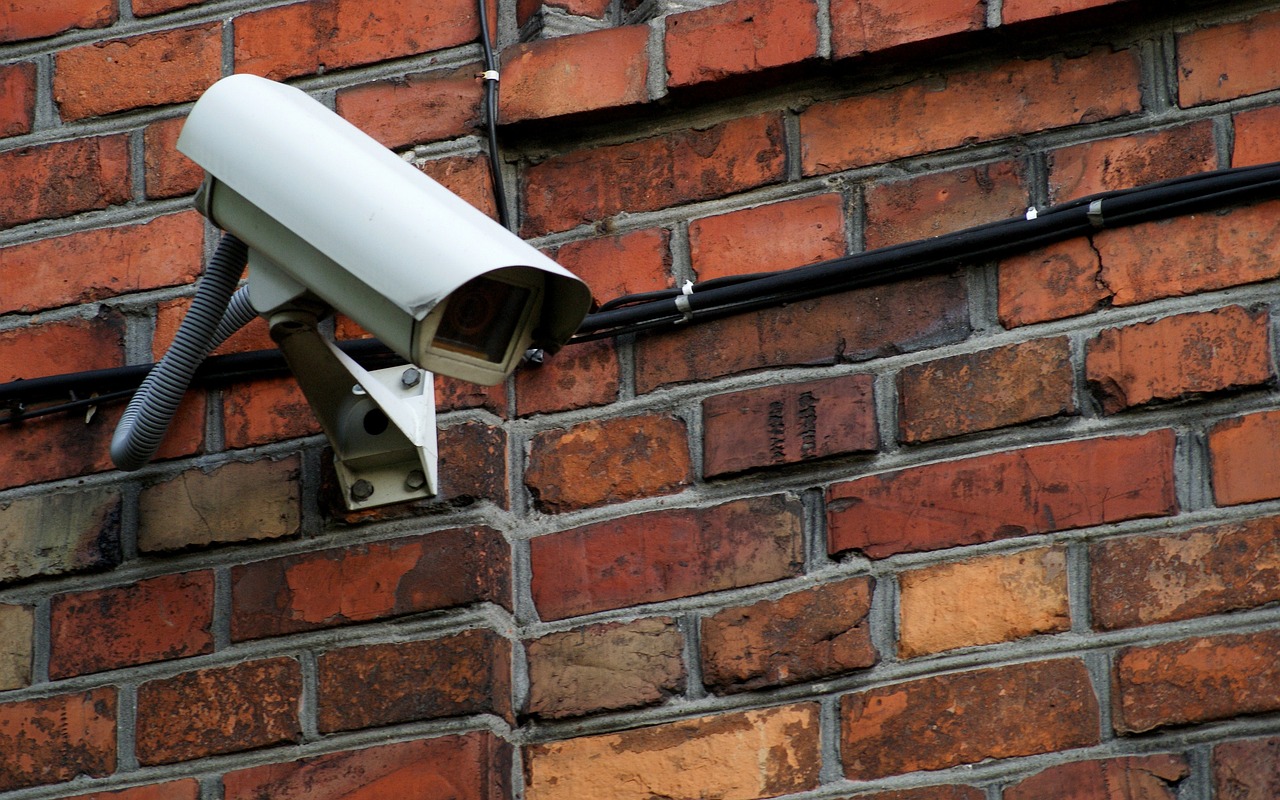
Best Practices for Wallet Security
In today's digital age, where our financial lives are increasingly intertwined with technology, securing your digital wallet is paramount. The best practices for wallet security not only protect your assets but also give you peace of mind. Implementing these strategies can be the difference between a secure digital experience and a potential financial disaster.
First and foremost, regular software updates are crucial. Keeping your wallet software and devices up to date ensures that you are protected against the latest vulnerabilities. Just like how a car needs regular maintenance to run smoothly, your digital wallet requires updates to function securely. Security patches are released to combat emerging threats, and failing to install them can leave you exposed. Make it a habit to check for updates weekly, and enable automatic updates whenever possible.
Another essential practice is strong password management. Your password is the first line of defense against unauthorized access to your wallet. Utilize strong, unique passwords that combine uppercase and lowercase letters, numbers, and special characters. It’s like creating a secret code that only you know! To simplify this process, consider using a password manager. These tools can generate complex passwords and store them securely, so you don’t have to remember each one. This way, you can focus on what really matters—managing your finances without the constant worry of security breaches.
Additionally, secure backup strategies are vital. Just as you would keep a physical copy of important documents in a safe place, you should also back up your digital wallet. This can be done by creating encrypted backups of your wallet data on external drives or secure cloud services. In the event of a device failure or a cyber attack, having a backup means you can recover your assets without a hitch. Make sure to regularly update your backups to reflect any changes in your wallet.
It's also important to be aware of your environment. Avoid accessing your wallet on public Wi-Fi networks, as these can be breeding grounds for hackers looking to intercept your data. If you must use public Wi-Fi, consider using a Virtual Private Network (VPN) to encrypt your connection. Think of a VPN as a secure tunnel through which your data travels, protecting it from prying eyes.
Finally, educating yourself about the latest security threats is a practice that cannot be overlooked. The digital landscape is constantly evolving, and so are the tactics used by cybercriminals. By staying informed, you can recognize potential threats before they become a problem. Follow reputable security blogs, subscribe to newsletters, and participate in online communities dedicated to wallet security. This proactive approach will keep you one step ahead of potential risks.
Q: How often should I change my wallet password?
A: It's recommended to change your password every 3 to 6 months, or immediately if you suspect any suspicious activity.
Q: What should I do if I think my wallet has been compromised?
A: Immediately change your password, enable two-factor authentication, and contact your wallet provider for further assistance.
Q: Are hardware wallets worth the investment?
A: Yes! Hardware wallets provide an extra layer of security by storing your assets offline, making them less vulnerable to online threats.
Q: Can I use the same password for multiple wallets?
A: It's highly discouraged. Using unique passwords for each wallet minimizes the risk of a widespread breach if one password is compromised.

Regular Software Updates
In the digital world, where threats evolve at lightning speed, keeping your wallet software and devices updated is not just a recommendation; it's a necessity. Think of software updates as the armor that protects your digital assets from the relentless onslaught of cyber threats. Each update is like a fresh coat of paint on a sturdy fortress, reinforcing its walls against potential invaders.
When you update your wallet software, you're not just adding new features or fixing bugs; you're also patching vulnerabilities that cybercriminals might exploit. Imagine a scenario where a hacker discovers a flaw in your wallet software—if you haven't updated, that flaw remains open, much like leaving a window unlocked in your home. Regular updates ensure that you close those windows before the bad guys can sneak in.
Moreover, many wallet providers release updates that include enhancements to security protocols. These improvements can involve stronger encryption methods, better authentication processes, and overall enhanced performance. By neglecting updates, you risk using outdated security measures that could expose your assets to unnecessary risks.
But how often should you check for updates? While it may vary by provider, a good rule of thumb is to enable automatic updates whenever possible. This way, you won’t have to remember to manually check for new versions. However, if you prefer to stay hands-on, set a reminder to review updates at least once a month. This simple habit can significantly reduce your vulnerability to cyber threats.
In addition to updating wallet software, don’t forget about your operating system and any other applications that interact with your digital wallet. Each component of your digital environment plays a role in your overall security. For instance, an outdated browser might not support the latest security features, leaving you exposed during online transactions.
To summarize, the importance of regular software updates cannot be overstated. They are your first line of defense against cyber threats. By staying proactive and ensuring every piece of your digital puzzle is up to date, you not only protect your assets but also gain peace of mind in an increasingly risky digital landscape.
- How often should I update my wallet software?
It's best to enable automatic updates or check for updates at least once a month. - What happens if I don't update my wallet software?
Neglecting updates can leave your wallet vulnerable to security threats and exploits. - Are software updates only for wallet applications?
No, you should also update your operating system and any related applications to ensure comprehensive security.
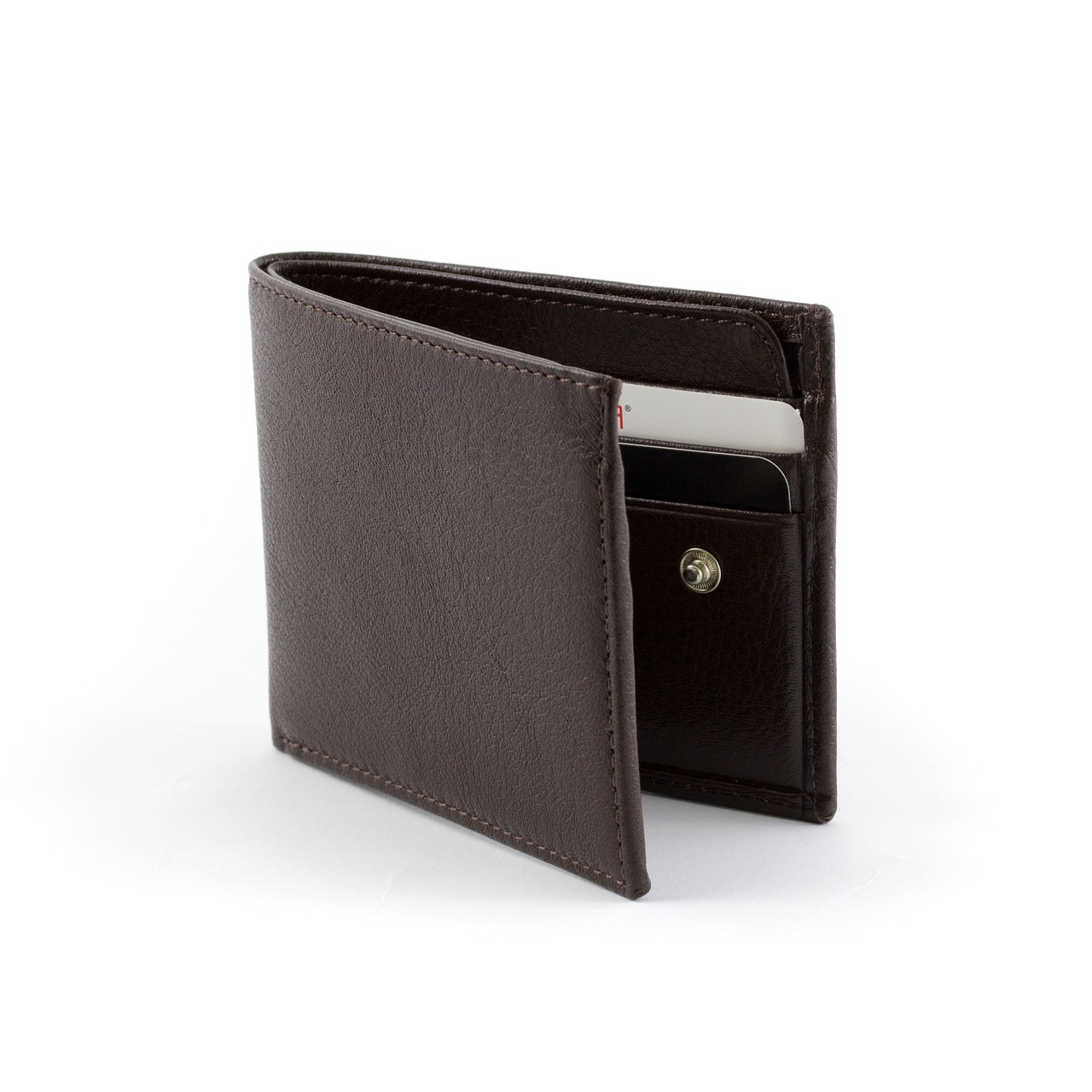
Strong Password Management
When it comes to wallet security, is your first line of defense. Think of your password as the key to your digital vault; if it’s weak, anyone can waltz right in and access your assets. So, how do you create a fortress around your wallet? It all starts with crafting passwords that are not only complex but also unique. A good password should be at least 12 characters long and include a mix of uppercase letters, lowercase letters, numbers, and special characters. For example, instead of using a simple password like "password123," consider something like "G!7h$2r@Pq9#fL." This complexity makes it significantly harder for attackers to crack your password using brute force methods.
But creating strong passwords is just the beginning. Managing them effectively is equally important. Many people fall into the trap of using the same password across multiple platforms, which can be a recipe for disaster. If one site suffers a data breach, hackers can easily access your other accounts. To avoid this, consider using a password manager. These handy tools can generate and store complex passwords for you, so you don’t have to remember each one. Popular options include LastPass, 1Password, and Bitwarden. They not only help you create secure passwords but also fill them in automatically, saving you time and hassle.
Another effective strategy is to enable two-factor authentication (2FA) wherever possible. This adds an extra layer of security by requiring a second form of verification, such as a text message code or an authentication app, in addition to your password. Even if someone manages to steal your password, they still won’t be able to access your wallet without that second factor. It’s like having a second lock on your door—just in case someone tries to pick the first one.
Let’s not forget the importance of regularly updating your passwords. It’s a good practice to change your passwords every three to six months, especially for sensitive accounts like your digital wallet. This can help mitigate the risk of unauthorized access, particularly if you suspect that your password may have been compromised. When updating, make sure to follow the same guidelines for creating strong passwords. And remember, don’t use easily guessable information like birthdays or names!
In summary, strong password management is crucial for protecting your digital wallet. By creating complex, unique passwords, utilizing password managers, enabling two-factor authentication, and regularly updating your passwords, you can significantly enhance your wallet security. Remember, your digital assets deserve the best protection you can provide!
- What is a password manager? A password manager is a tool that helps you create, store, and manage your passwords securely.
- How often should I change my passwords? It’s advisable to change your passwords every three to six months, especially for sensitive accounts.
- What is two-factor authentication? Two-factor authentication is an extra layer of security that requires not just a password but also a second form of verification.
- Can I use the same password for multiple accounts? No, using the same password across multiple accounts can increase your risk if one account is compromised.
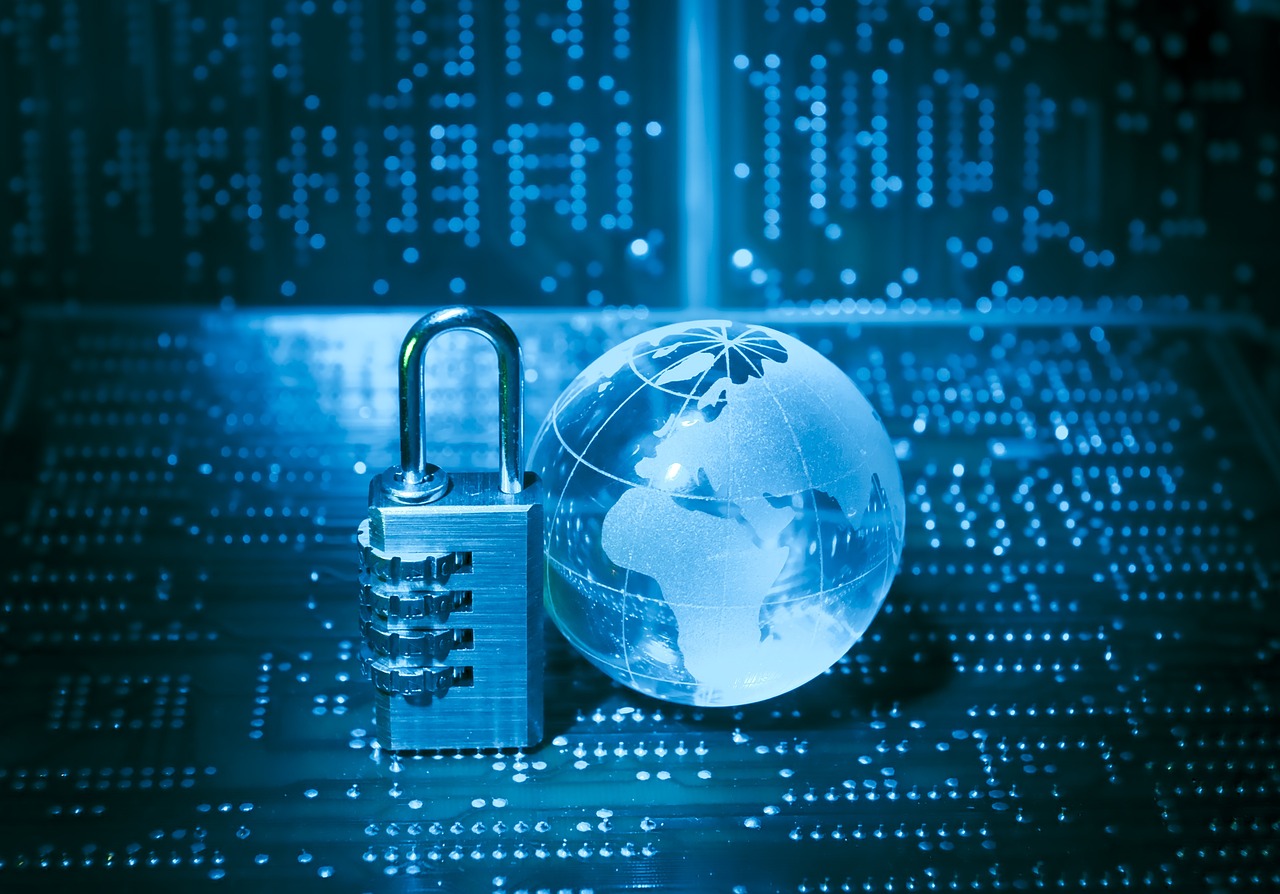
Staying Informed on Security Trends
In the fast-paced world of digital finance, staying informed about security trends is not just beneficial; it’s essential. The landscape of cyber threats is constantly evolving, and what was considered secure yesterday may not hold up today. So, how can you keep your finger on the pulse of wallet security? It’s easier than you might think! By engaging with reputable sources and communities, you can arm yourself with the knowledge needed to protect your digital assets effectively.
One of the best ways to stay updated is by following security blogs. These platforms often provide in-depth analyses of new threats, emerging technologies, and best practices for safeguarding your wallet. Blogs like SecurityWeek and Krebs on Security are excellent resources. They not only cover the latest news but also delve into case studies that can help you understand how to mitigate risks. Here are some benefits of following security blogs:
- Timely Updates: Get real-time information about vulnerabilities and exploits.
- Expert Opinions: Gain insights from industry experts and thought leaders.
- Practical Tips: Learn actionable strategies to enhance your wallet security.
Another effective strategy is to participate in online communities. Platforms like Reddit, Discord, and specialized forums provide spaces for users to discuss their experiences, share advice, and learn from one another. Engaging in these communities not only helps you stay informed but also allows you to ask questions and get feedback on your security practices. Consider joining groups focused on cybersecurity or digital finance to maximize your learning.
In addition to blogs and forums, you should also subscribe to security newsletters. Many cybersecurity firms offer newsletters that summarize the latest trends, news, and tips straight to your inbox. This way, you can easily stay updated without having to scour the internet daily. Here’s a quick look at some reputable sources you might consider:
| Source | Focus Area | Subscription Link |
|---|---|---|
| Security Weekly | General Cybersecurity | Subscribe |
| Threatpost | Latest Threats | Subscribe |
| CyberScoop | Government & Industry News | Subscribe |
Finally, don’t underestimate the value of webinars and online courses. Many organizations offer free or low-cost training sessions that cover a range of topics, from basic wallet security to advanced threat detection techniques. Participating in these educational opportunities not only enhances your knowledge but also connects you with other like-minded individuals who are just as passionate about security.
In summary, staying informed on security trends is a proactive approach to protecting your digital wallet. By following blogs, participating in communities, subscribing to newsletters, and engaging in educational opportunities, you equip yourself with the tools and knowledge necessary to navigate the ever-changing landscape of digital threats. Remember, in the world of cybersecurity, knowledge is power!
Q: How often should I check for updates on wallet security?
A: It's a good idea to check for updates at least once a week, but subscribing to security newsletters can help you stay informed without constant checking.
Q: Are there any specific blogs you recommend for wallet security?
A: Yes, blogs like SecurityWeek and Krebs on Security are highly recommended for their insightful articles on current security trends.
Q: What should I do if I suspect my wallet has been compromised?
A: Immediately change your passwords, enable two-factor authentication, and contact your wallet provider for further instructions.

Following Security Blogs
In today's fast-paced digital world, staying informed about wallet security is not just a good idea—it's a necessity. One of the best ways to keep your knowledge up to date is by following security blogs. These blogs serve as a treasure trove of information, offering insights into the latest threats, vulnerabilities, and best practices for safeguarding your digital assets.
Imagine you’re navigating through a dense forest. Without a map or a guide, you might easily lose your way. Similarly, without reliable sources of information, you might find yourself lost in a sea of misinformation regarding wallet security. Security blogs act as your guide, helping you identify the safest paths to take in the digital landscape.
When selecting which blogs to follow, consider those that are reputable and have a proven track record. Look for blogs that cover a variety of topics, including:
- Emerging Threats: Blogs that discuss new phishing scams, malware variants, and other evolving threats can help you stay one step ahead of cybercriminals.
- Best Practices: Articles that provide actionable tips on password management, two-factor authentication, and secure storage methods are invaluable.
- Case Studies: Learning from others' experiences can be enlightening. Blogs that share real-life incidents of wallet breaches can help you understand what went wrong and how to avoid similar pitfalls.
Additionally, many security blogs offer newsletters that deliver the latest news directly to your inbox. Subscribing to these newsletters can ensure that you never miss an important update. It’s like having a personal assistant who keeps you informed about everything happening in the world of digital security.
Furthermore, engaging with the community around these blogs can enhance your understanding. Many blogs have comment sections or forums where readers discuss articles and share their own experiences. Participating in these discussions not only broadens your knowledge but also provides an opportunity to ask questions and gain insights from others who are just as concerned about wallet security as you are.
In essence, following security blogs is an essential part of maintaining your wallet security. By keeping yourself informed through credible sources, you empower yourself to make better decisions and protect your digital assets effectively. Remember, in the realm of cybersecurity, knowledge is not just power—it’s your best defense.
Q: How often should I check security blogs?
A: It's a good idea to check security blogs regularly—ideally, at least once a week. This frequency helps you stay updated on the latest threats and best practices.
Q: Are all security blogs trustworthy?
A: No, not all security blogs are created equal. Look for blogs that are well-cited, have a good reputation, and are written by experts in the field.
Q: Can I rely solely on blogs for my wallet security?
A: While blogs are a great resource, they should be part of a broader strategy that includes using security tools, following best practices, and staying engaged with communities.
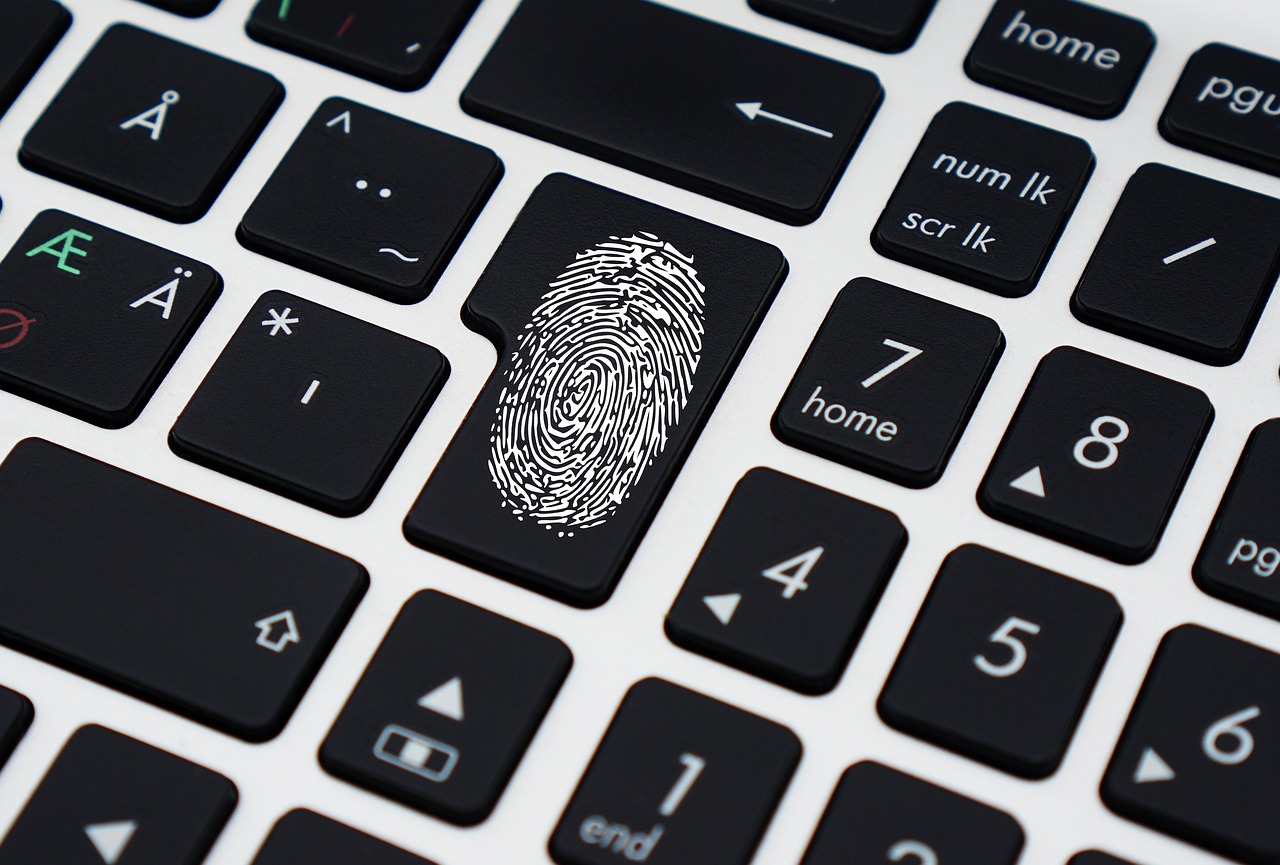
Participating in Online Communities
One of the most effective ways to stay informed about wallet security is by actively participating in online communities. These forums and groups are treasure troves of information, where users share their experiences, insights, and strategies for keeping their digital assets safe. Imagine walking into a bustling marketplace filled with people exchanging tips and tricks—this is what online communities offer to those interested in wallet security!
By engaging in discussions, you can learn from the mistakes of others and avoid potential pitfalls. For instance, a user might share their experience with a specific phishing scam, detailing how they fell for it and what they wish they had done differently. Such real-life stories can be incredibly enlightening and serve as a warning to others. Furthermore, these communities often discuss the latest trends in security threats, keeping members updated on what to watch out for.
There are various platforms where you can find these communities, including:
- Reddit: Subreddits focused on cryptocurrencies and digital wallets often have active discussions about security.
- Discord: Many crypto-related servers provide a space for real-time chat, allowing for quick exchanges of information.
- Facebook Groups: Look for groups dedicated to cryptocurrency or digital finance; they can be quite resourceful.
Additionally, participating in these communities can foster a sense of camaraderie and support. You’re not just learning; you’re also contributing to a collective knowledge base. When you share your own tips or experiences, you help others navigate the complex world of digital wallet security. It’s like being part of a neighborhood watch, but for your digital assets!
However, it's essential to remain cautious while interacting in these online spaces. Always verify the credibility of the information shared and be wary of anyone soliciting personal details or trying to sell you unverified products. Remember, the internet can be a double-edged sword, and while communities can provide valuable insights, they can also harbor misinformation.
In conclusion, participating in online communities is not just about gaining knowledge; it’s about building a network of support and staying ahead of potential threats. By sharing experiences and learning from others, you can significantly enhance your understanding of wallet security and ensure that your digital assets remain protected.
Q: How can I find reliable online communities for wallet security?
A: Look for communities on platforms like Reddit, Discord, and Facebook that focus on cryptocurrency and digital finance. Check the activity level and see if the discussions are informative and respectful.
Q: Are all online communities trustworthy?
A: Not all communities are created equal. Always verify the credibility of the information shared and be cautious of anyone asking for personal information or promoting unverified products.
Q: Can participating in online communities help me deal with security threats?
A: Absolutely! Engaging with others can provide insights into emerging threats and effective strategies for mitigating risks. Sharing experiences can also help you learn from others’ mistakes.
Q: Should I share my personal wallet details in these communities?
A: No, you should never share your personal wallet details or sensitive information in online communities. Always prioritize your security and privacy.

Utilizing Security Tools
In the digital age, where our financial transactions are often just a click away, has become a necessity rather than a luxury. Think of these tools as your digital bodyguards, standing vigilant against threats that could compromise your assets. With the right arsenal of security tools, you can significantly enhance the protection of your digital wallet, ensuring that your hard-earned money remains safe from prying eyes.
One of the most fundamental tools in your security toolkit is antivirus and anti-malware software. These programs are designed to detect, prevent, and remove malicious software that could potentially infiltrate your device. Imagine your computer as a fortress; antivirus software is the moat that keeps unwanted intruders at bay. Regularly updating this software ensures that you are protected against the latest threats, as cybercriminals are constantly evolving their tactics. Investing in reputable antivirus solutions can provide peace of mind, knowing that you have a robust defense in place.
Another invaluable tool is the hardware wallet. Unlike software wallets that are connected to the internet, hardware wallets store your digital assets offline. This makes them less susceptible to online threats, much like keeping your valuables in a safe rather than in an open drawer. Hardware wallets come in various forms, from USB drives to dedicated devices, and they offer an added layer of security by requiring physical access for transactions. For those serious about safeguarding their cryptocurrencies or digital assets, a hardware wallet is an investment worth considering.
In addition to these tools, consider utilizing two-factor authentication (2FA). This extra layer of security requires not just your password but also a second form of verification, such as a code sent to your phone. Think of it as needing both a key and a secret code to enter your house; it makes unauthorized access much more difficult. Many wallet providers offer 2FA as a standard option, and enabling it can greatly enhance your security posture.
Now, let's take a moment to summarize some of the essential security tools you should consider:
| Security Tool | Purpose |
|---|---|
| Antivirus Software | Detects and removes malware to protect your device. |
| Hardware Wallet | Stores digital assets offline for enhanced security. |
| Two-Factor Authentication | Provides an additional verification step for secure access. |
Ultimately, utilizing these security tools is about creating a comprehensive defense strategy. Just like a well-rounded fitness regimen includes strength training, cardio, and flexibility exercises, your digital security should incorporate multiple layers of protection. By combining antivirus software, hardware wallets, and two-factor authentication, you can create a robust security framework that keeps your digital wallet safe from various threats. Remember, in the world of cybersecurity, it’s always better to be proactive than reactive.
- What is the best antivirus software for wallet security?
The best antivirus software varies based on user needs, but look for ones that offer real-time protection, regular updates, and good customer support.
- Are hardware wallets worth the investment?
Yes, especially if you hold a significant amount of cryptocurrency or digital assets. They provide enhanced security by keeping your assets offline.
- How often should I update my security tools?
Regular updates are crucial; ideally, you should check for updates weekly or enable automatic updates if available.

Antivirus and Anti-Malware Software
In today's digital landscape, where threats lurk around every corner, investing in antivirus and anti-malware software is not just a luxury—it's a necessity. Think of these tools as your first line of defense, safeguarding your digital wallet from potential intruders who aim to steal your sensitive information. Just as you wouldn’t leave your front door wide open, you shouldn't leave your devices unprotected against malicious attacks.
Antivirus software works by scanning your computer for known threats and eliminating them before they can do any damage. On the other hand, anti-malware software goes a step further by detecting and removing a broader range of malicious software, including spyware, adware, and ransomware. Together, they create a comprehensive security blanket for your digital assets.
To help you understand the importance of these tools, let's break down the primary functions of antivirus and anti-malware software:
- Real-time Protection: These programs continuously monitor your system for suspicious activity, allowing for immediate action against threats.
- Regular Updates: They frequently update their databases to include the latest threats, ensuring that you are always protected against newly discovered malware.
- Scheduled Scans: You can set up automatic scans to run at specific intervals, making it easy to keep your system clean without manual effort.
It's crucial to choose reputable software that fits your needs. Some popular options include Norton, McAfee, and Bitdefender, each offering unique features designed to enhance your security. Always read reviews and consider what other users are saying about their experiences to make an informed choice.
Moreover, remember that while antivirus and anti-malware software are essential, they are not foolproof solutions. It's vital to combine these tools with other security practices, such as using strong passwords and enabling two-factor authentication, to create a multi-layered defense strategy. This holistic approach not only protects your digital wallet but also enhances your overall online security.
Q: How often should I update my antivirus software?
A: It's best to set your antivirus software to update automatically. Regular updates ensure you have the latest protection against emerging threats.
Q: Can I rely solely on free antivirus software?
A: While free antivirus software can offer basic protection, premium versions often provide more comprehensive features, including real-time protection and advanced threat detection. It's worth considering investing in a paid solution for better security.
Q: What should I do if my antivirus software detects a threat?
A: Follow the software's instructions to quarantine or remove the threat. Additionally, run a full system scan to ensure no other malicious files are present.
Q: Is antivirus software necessary if I have a firewall?
A: Yes, while a firewall helps block unauthorized access to your network, antivirus software is crucial for detecting and removing malware that may already be on your device.

Hardware Wallets
When it comes to securing your digital assets, are often hailed as one of the most robust solutions available. These physical devices store your cryptocurrencies offline, making them less susceptible to online threats compared to traditional software wallets. Imagine keeping your valuables in a safe rather than just leaving them out in the open; that's essentially what a hardware wallet does for your digital currencies.
One of the key advantages of using a hardware wallet is the enhanced security it offers. By keeping your private keys offline, you significantly reduce the risk of hacking. Even if your computer is compromised by malware, your funds remain secure in the hardware wallet. This is akin to having a vault that only you can access, no matter what happens to your surroundings.
However, it's essential to choose a reputable hardware wallet brand. There are several options available, each with its unique features. Some of the most popular hardware wallets include:
- Ledger Nano S: Known for its compact design and strong security features, it supports a wide range of cryptocurrencies.
- Trezor Model T: Offers a touchscreen interface and supports numerous coins, making it user-friendly.
- KeepKey: Features a large display and is designed to be easy to use, particularly for beginners.
Before purchasing a hardware wallet, consider factors such as compatibility with your preferred cryptocurrencies, the user interface, and the level of security provided. Additionally, always buy hardware wallets directly from the manufacturer or authorized retailers to avoid counterfeit products that could compromise your security.
In summary, hardware wallets are an excellent choice for anyone serious about protecting their digital assets. They provide a physical layer of security that is hard to beat, making them a wise investment in your financial safety. Just remember to keep your recovery phrase safe and never share it with anyone; it’s the key to accessing your funds should you ever lose your device!
1. What is a hardware wallet?
A hardware wallet is a physical device designed to securely store your cryptocurrency private keys offline, providing enhanced security compared to online wallets.
2. Are hardware wallets completely safe?
While hardware wallets are much safer than software wallets, they are not entirely immune to risks. It's crucial to buy from reputable sources and follow best practices for security.
3. Can I use multiple cryptocurrencies with a hardware wallet?
Most hardware wallets support a variety of cryptocurrencies, but it's essential to check the specifications of the wallet you choose to ensure it meets your needs.
4. What should I do if I lose my hardware wallet?
If you lose your hardware wallet, you can recover your funds using the recovery phrase provided during setup. Ensure you store this phrase securely and privately.
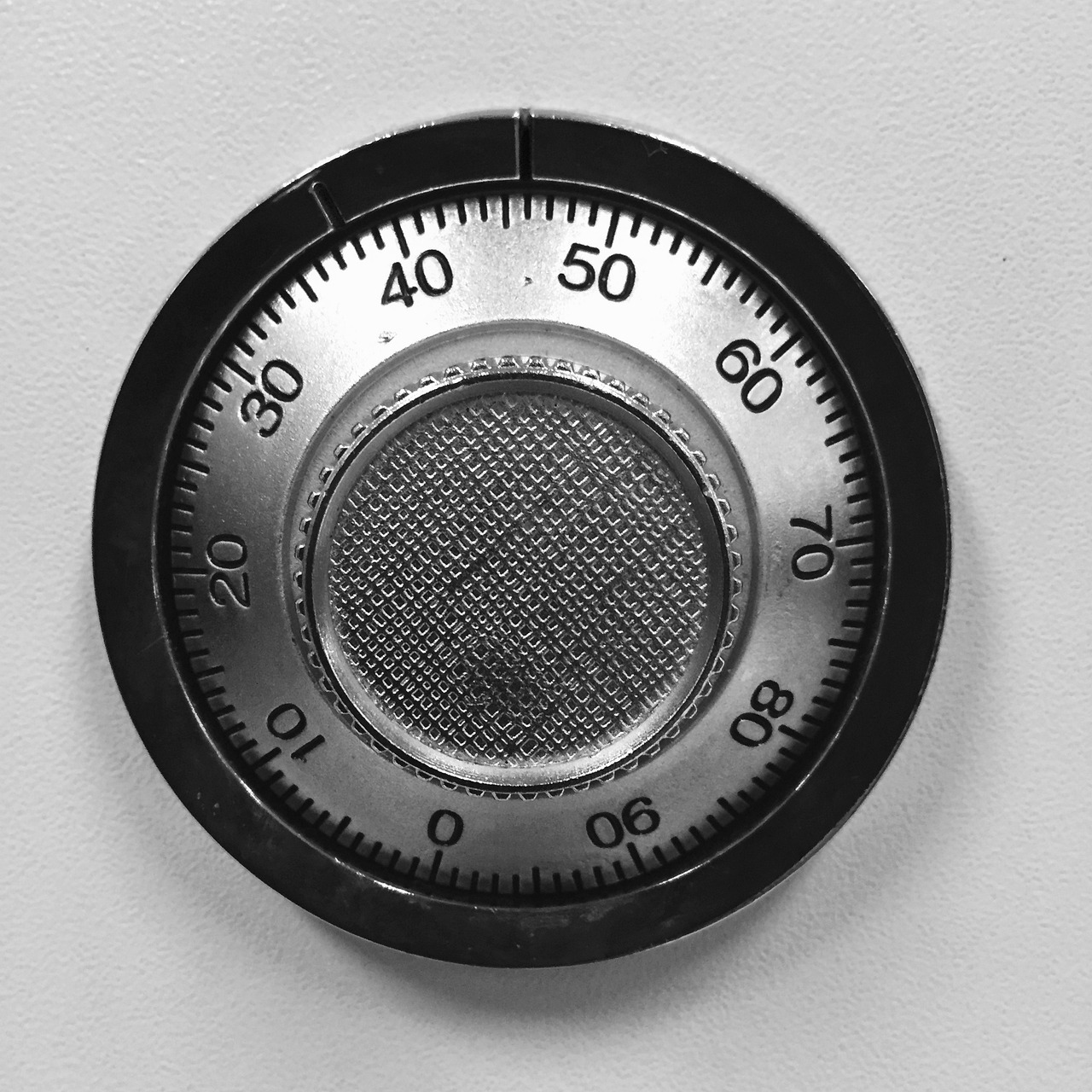
Conclusion
In conclusion, staying updated on wallet security best practices is not just a precaution; it’s a necessity in our increasingly digital world. As we continue to rely on digital wallets for our financial transactions, understanding the potential threats and how to counteract them becomes paramount. By implementing the strategies discussed throughout this article, such as recognizing phishing attempts, utilizing strong passwords, and keeping software updated, you can significantly enhance your wallet's security.
Moreover, being proactive about your digital safety means engaging with the latest trends and tools available. With the rapid evolution of technology, threats are constantly changing, and so should your defenses. Investing time in learning about security tools like hardware wallets and anti-malware software can provide an additional layer of protection against potential breaches. Remember, it’s not just about securing your wallet today; it’s about preparing for the future.
As you navigate the digital landscape, keep in mind that knowledge is power. By staying informed through reputable sources and participating in online communities, you can share insights and strategies with others, creating a collective shield against cyber threats. Ultimately, the more informed you are, the better equipped you'll be to protect your digital assets.
- What is the most effective way to secure my digital wallet? Regularly update your wallet software, use strong passwords, and consider using hardware wallets for added security.
- How can I recognize phishing attempts? Look for unusual sender addresses, poor grammar, and urgent requests for personal information in emails or messages.
- Are hardware wallets really safer than software wallets? Yes, hardware wallets store your assets offline, making them less vulnerable to online threats.
- What should I do if I suspect my wallet has been compromised? Immediately change your passwords, enable two-factor authentication, and contact your wallet provider for further assistance.
Frequently Asked Questions
- What are the best practices for securing my digital wallet?
To secure your digital wallet, consider these best practices: regularly update your wallet software, use strong and unique passwords, enable two-factor authentication, and back up your wallet securely. These steps create multiple layers of protection against potential threats.
- How can I identify phishing attacks targeting my wallet?
Phishing attacks often come in the form of emails or messages that look legitimate but ask for sensitive information. Look for unusual sender addresses, generic greetings, and urgent requests for personal details. Always verify the source before clicking on any links.
- What types of malware should I be concerned about?
Malware can take various forms, including viruses, ransomware, and spyware. These can infiltrate your device and compromise your wallet security. It's crucial to use reputable antivirus software to detect and eliminate these threats before they cause harm.
- How often should I update my wallet software?
You should update your wallet software as soon as updates are available. Software developers regularly release updates to fix vulnerabilities and enhance security features. Keeping your software current is key to protecting your digital assets.
- Are hardware wallets safer than software wallets?
Yes, hardware wallets are generally considered safer than software wallets because they store your digital assets offline, reducing exposure to online threats. They are less susceptible to hacking and malware attacks, making them an excellent choice for long-term storage.
- How can I stay informed about the latest security trends?
To stay updated on wallet security trends, follow reputable security blogs, subscribe to newsletters, and engage with online communities. These resources provide valuable insights into emerging threats and effective security strategies.
- What should I do if I suspect my wallet has been compromised?
If you suspect your wallet has been compromised, immediately change your passwords, enable two-factor authentication, and contact your wallet provider for assistance. Additionally, monitor your accounts for any unauthorized transactions.


